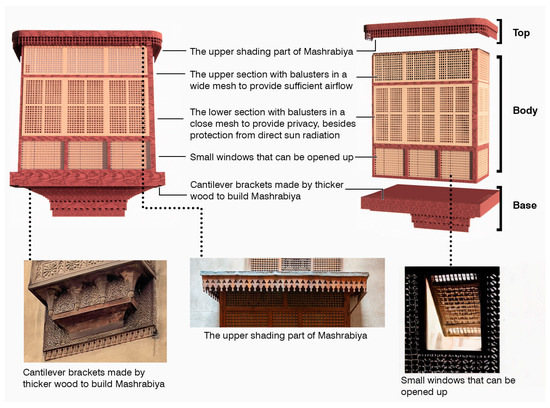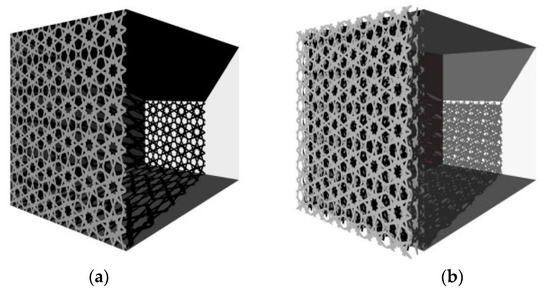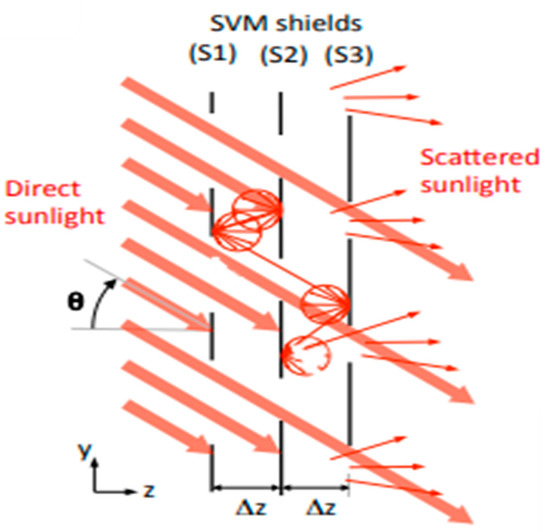The traditional and indigenous architecture in Saudi Arabia is being replaced by modern, Western-style buildings, resulting from the growing influence of Western culture. This change is evident in architectural elements such as Mashrabiya, which was once a symbol of the country’s Islamic architecture. The research paper aims to analyse the impact of modernization and the resurgence of Mashrabiya on a building’s energy efficiency, as well as the cultural and religious integrity of its historical counterpart in the context of Saudi Arabia. The study employed mixed research methods, including an online survey with Saudi Arabian households to study the public perception of Mashrabiya, case studies of residences with traditional and modern Mashrabiya, and a range of dynamic thermal simulations on a residence with traditional Mashrabiya to study its impact on energy consumption. The survey revealed that the public is aware of the changing face of Mashrabiya and its impact on the cultural and religious identity of the region, mainly privacy, but it is largely uninformed about ways to preserve its true essence. The simulations demonstrated a significant improvement in thermal comfort, i.e., an approximate 14% reduction in operative temperature and a 77.8% reduction in peak solar gain; an improvement in energy efficiency, i.e., a 5.7% reduction in monthly cooling load and a 35.5% improvement in daylight factor. Based on the findings, the research provides several recommendations to preserve the identity of traditional Mashrabiya while enhancing their energy efficiency, such as the incorporation of traditional design elements into the plans of the Saudi Arabian government.
- Mashrabiya
- Saudi Arabia
- energy consumption
- simulation
- architectural identity
1. Introduction


2. Concept of Mashrabiya
The origin of the Mashrabiya in the Middle East can be traced back to its Arabic root word “Sharab,” meaning “To drink” [4][17][18][19][20][4,17,18,19,20]. Initially, Mashrabiya referred to a location where one could access water from a clay pot. Over time, it evolved into a functional element that combined wooden lattice panels with a clay pot, serving as a means to keep the water cool and provide a cooling effect [4][19][20][4,19,20]. Mashrabiya, distinctive features of Middle Eastern architecture, found widespread application in traditional houses due to their exceptional suitability for coping with the region’s dominant climatic condition: extreme heat. Unlike Western countries, where such conditions are less prevalent, the Mashrabiya’s popularity in the Middle East can be attributed not only to environmental factors but also to the cultural values embedded in the Middle Eastern society, which are heavily influenced by Islamic principles. Among them, one such value is privacy, which holds significant importance in Middle Eastern culture [19][20][21][19,20,21]. As a result, Mashrabiya effectively addressed both environmental and social concerns, making them an integral component of Middle Eastern architecture. Over time, the expression of the “Mashrabiya” has undergone significant transformations, adopting diverse forms. Among these, the most renowned is the projecting bay window featuring timber panels constructed from lathe-shaped wooden balusters. These balusters are arranged in a lattice pattern, forming distinct geometric designs, and they are positioned at regular intervals [22]. A Mashrabiya offers occupants the benefit of privacy from external views while enabling them to observe the surroundings through the lattice. When the Mashrabiya faces the street, the spacing between the balusters is typically narrower at eye level, while the upper part, situated above eye level, would have a wider arrangement in order to facilitate sufficient airflow [23] (Figure 4). It can permit the passage of ambient light into spaces while preventing direct sunlight. In order to avoid optical discomfort due to glare, architects are advised to opt for Mashrabiya designs featuring balusters with a circular section, as specified by Fathy. This choice ensures the creation of gradual shadows, minimizing contrast and distinguishing it from shading devices utilizing square sectional balusters or similar alternatives [4].3. Privacy
The significance of social values in Islamic culture cannot be overstated, and among these values, privacy holds a paramount position in Muslim households [23][24][25][23,24,25]. The traditional Mashrabiya, with its intricate lattice design, offered residents the necessary protection from outside prying eyes, while still affording them the opportunity to view their surroundings from the comfort and privacy of their own abode. It is notable that the spacing between the balusters of the Mashrabiya, when facing the street, is carefully considered, with a more closely spaced design at eye level and a more open design above eye level, as stated by Alothman and Akçay [23]. This intricate consideration of privacy in the design of the Mashrabiya highlights the importance placed on this cultural value in traditional Islamic architecture. According to the Islamic religion, to preserve the modesty and seclusion of women, strict segregation between males and females is deemed necessary to preserve decorum [20]. This principle is reflected in the design, form, and function of both residential and public spaces, providing female occupants with the opportunity to experience outdoor life without attracting undue attention or compromising their privacy. The significance of privacy has been further corroborated by a comprehensive study conducted by Alelwani et al. [3], which indicated that a significant majority of participants, amounting to 61.15%, held the strong belief that privacy holds utmost importance, whereas only a negligible proportion of 1.23% expressed the view that privacy is not a crucial factor.4. Natural Lighting
A Mashrabiya plays a crucial role in regulating the amount of direct daylight that enters a building, with the design parameters determined by the architect [26]. During the summer, it helps block out the harmful sun rays, minimizes internal heat build-up, and still allows for an adequate amount of light to penetrate into the building. The presence of a Mashrabiya enables ambient light to permeate the interior space without admitting direct sunlight, hence reducing excessive glare, which can cause visual discomfort even though it does not raise the room temperature [27]. As a result, a Mashrabiya proves to be one of the most effective solutions to this issue. According to Fathy [4], the architect must select a Mashrabiya with a circular cross-section for the balusters, as this creates a gradual shadow that minimizes contrast. This is in contrast to square sectional balusters or similar shading devices that may cause sharp shadows. It is important to note that this condition is often overlooked in contemporary projects that utilize Mashrabiya, particularly when using steel in their construction, resulting in a recurrent mistake [28]. Mashrabiya are being reinvented by designers as high-tech daylight systems, often on a grand scale, utilizing computer technology. Their purposes extend beyond being oriental ornaments for covering tall buildings to being major responsive daylight systems [19]. Giovanni et al. [29] explore the possibility of designing a “Shape Variable Mashrabiya (SVM)” (Figure 5) for lighting and shading. The study compares its performance with standard Venetian blinds, and diffused daylight, and proves that, at low elevation angles, it provides sufficient daylighting under direct sunlight, in contrast to typical Venetian blinds. A follow-up research paper by the same authors in 2015 [30] demonstrated the SVM’s ability to provide significant quantitative advantages in terms of daylighting, energy savings, and visual comfort for users by controlling glare. It reduced the primary energy required for lighting by up to 65.7% compared to reflective glazing with 16% light transmittance (RG16) and 30.7% compared to Venetian blinds (VB). The results were identified through simulations, however, a better methodology to gain insights into the practical implementation of an innovative kinetic Mashrabiya system would be the use of real scale prototypes, which can provide performance monitoring, as well as insights regarding its potential aesthetic value.5. Energy Efficiency
Mashrabiya can reduce a building’s energy consumption by limiting solar gain, cooling the interior spaces, and ensuring adequate air flow [31]. Most of the authors who have studied the lighting, cooling, and thermal comfort effects have also concluded their findings on the energy performance of the building as well. Madan and Saxena [32], as well as El Semary et al. [19], conducted case studies on the Al Bahr Tower, Abu Dhabi, and found that the kinetic Mashrabiya contributed to a 25% reduction in cooling load and a 20% to 50% reduction in solar gain. Karamata et al. [30] developed Shape Variable Mashrabiya (SVM), which proved to be a promising innovative technology for arid climates. Through experimentation in a sample peripheral space, SVM was found to significantly reduce overheating issues, leading to a decreased primary energy demand for cooling compared to selective glazing and Venetian blinds (17.2% and 9.9%, respectively). It also minimized the primary energy requirement for lighting (by 65.7% and 30.7% compared to RG16 and VB, respectively) while simultaneously improving lighting efficiency (the concept is shown in Figure 6), resulting in a reduction in global primary energy usage by 27% and 16.3% compared to RG16 and VB, respectively, as cited by Bagasi and Calautit [33]. Taleb and Antony [34] further endorse this in their experiments, which were conducted by adding Mashrabiya as a 75% tinted, frosted adhesive film to the glazing. A 40% coverage of the glazing unit used the Mashrabiya pattern, and results showed that this could lower the cooling load by 23%. A survey by Alelwani et al. [3] shows that 78% of the participants ranked aesthetics as the most critical factor, and for 58.48%, energy efficiency comes second to aesthetics. The Mashrabiya has evolved from a simple window screen to a highly complex facade system that may work as a possible shading screen for the entire building, making it more energy efficient [35]. When it comes to commercial high-rise buildings, the most prominent criterion aimed at by contemporary Mashrabiya is their energy efficiency, rather than other functional factors, such as ventilation, or social factors, such as privacy. However, the findings by Alelwani et al. [3] imply that contemporary façades, modelled after Mashrabiya in smaller structures, such as residences, are built solely for pretentious and aesthetic reasons, ignoring the functional features that made them environmentally viable in the first place.6. Material and Construction
The primary traditional material used for the construction of Mashrabiya is wood, owing to its capability to regulate internal shadows, minimize glare, withstand high temperatures, and influence humidity buffering and airflow cooling [36]. The Mashrabiya was originally constructed using one of three local wood varieties: pine, walnut, or beech. However, craftsmen also incorporated imported woods, such as oak and walnut, from Europe and West Asia, as well as ebony from Somalia, South Sudan, and Ethiopia [30]. The construction of Mashrabiya in Bahrain and the Middle East has been notably influenced by the region’s local materials and skilled craftsmen, making it unique to its region. When solid wood was not available as a local source, gypsum clay was utilized instead. Gypsum’s porous quality made it well-suited for use in humid regions. Nonetheless, the design constraints and decorative features of gypsum-based Mashrabiya were considerably different from those made from wood [31]. Almerbati et al. [37] investigated the feasibility of developing parametric Mashrabiya via 3D printing technology, with the objective of identifying the implications for new digital craftsmen and fabricators. Their research focused on developing input data that would enable the generation of assemblies capable of delivering functional performance, while also supporting cultural development, as cited by Almurbati [36]. The emergence of 3D printing technologies over the past two decades has opened up the possibility of using the performative analyses of existing Mashrabiya to inform the development of new parametric models, which can be customized for specific sites and produced using large-scale 3D printing [36] (Figure 7).




